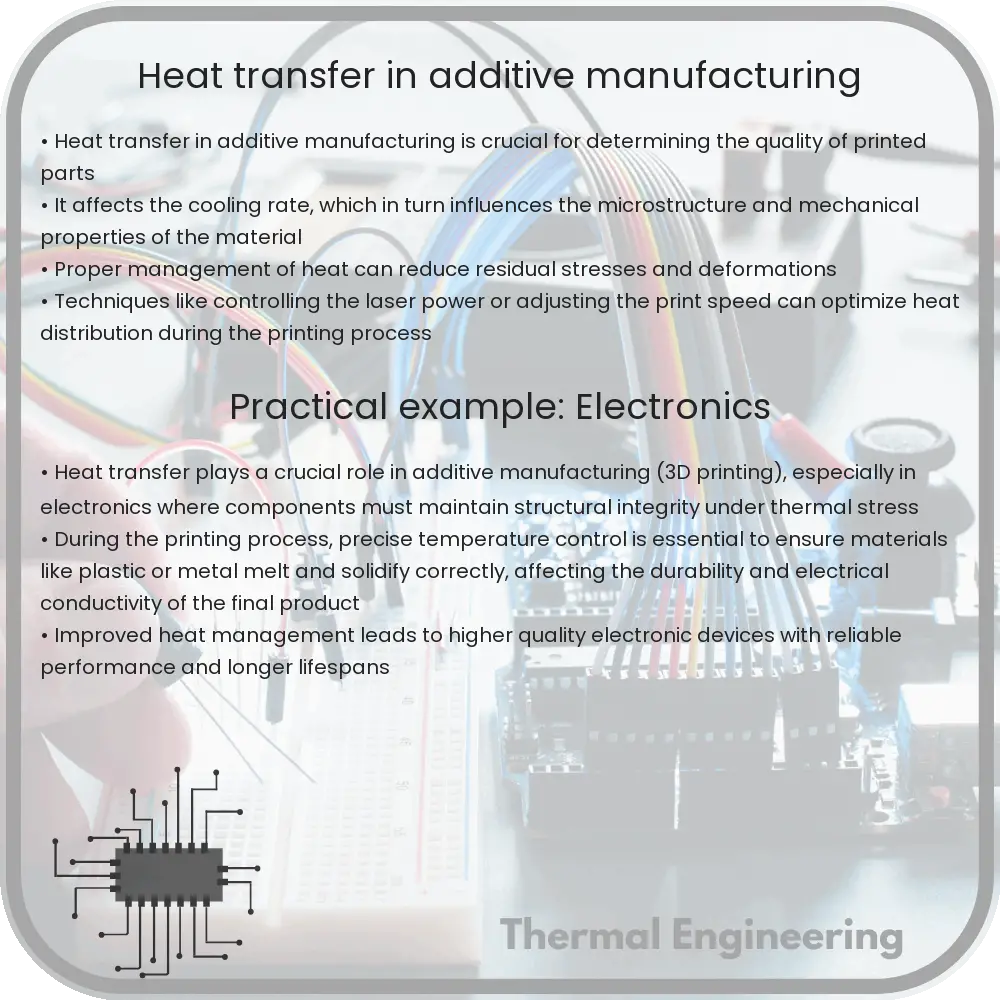Learn about heat transfer’s role in additive manufacturing, including conduction, convection, radiation, and their impact on 3D printing quality and efficiency.

Understanding Heat Transfer in Additive Manufacturing
Additive manufacturing, more commonly known as 3D printing, is a revolutionary approach to fabricating objects layer by layer from a digital model. One critical aspect of this technology is the management of heat transfer during the printing process. Heat transfer affects the quality, efficiency, and physical properties of the final product. In this article, we explore how heat transfer occurs in additive manufacturing and its implications.
Types of Heat Transfer in Additive Manufacturing
In additive manufacturing, heat transfer primarily occurs through conduction, convection, and radiation. Each plays a pivotal role depending on the material and the specific technology used:
- Conduction: This is the transfer of heat through materials that are in direct contact. In 3D printing, this happens between the layers of material as they are deposited and fused together.
- Convection: In processes where a heat source like a laser or electron beam is used, convection can occur due to the movement of air or protective gases around the print area.
- Radiation: Radiative heat transfer may occur from the heat source to the material being printed, especially in metal additive manufacturing where high temperatures are involved.
Critical Factors Impacting Heat Transfer
Several factors influence the efficiency and dynamics of heat transfer during the printing process:
- Material Properties: Different materials, such as polymers, metals, and ceramics, have distinct thermal properties like thermal conductivity, specific heat capacity, and emissivity.
- Layer Thickness: The thickness of each layer affects how quickly heat is conducted through the material. Thinner layers may cool faster, potentially influencing the bond between successive layers.
- Printing Environment: Temperature, ambient pressure, and the presence or absence of inert gases can affect convection and cooling rates.
- Energy Source: The intensity, focus, and duration of the energy applied (laser, electron beam, etc.) greatly influence localized heating and cooling.
Challenges and Solutions in Heat Management
Improper management of heat transfer can lead to defects such as warping, residual stresses, and poor mechanical properties. Addressing these challenges involves several strategies:
- Optimizing Print Parameters: Adjusting factors like the power of the heat source, print speed, and layer thickness can help manage the heat distribution and mitigate defects.
- Using Thermal Simulation: Computer simulations can predict how heat will affect a part during printing, allowing for adjustments before actual production.
- Post-Processing: Techniques such as heat treatment and annealing can be used post-printing to relieve residual stresses and improve the structural integrity of a printed object.
Future Directions
As additive manufacturing technologies evolve, understanding and controlling heat transfer will remain crucial. Advances in thermal imaging and real-time monitoring could lead to better control systems that dynamically adjust printing parameters for optimal heat management. Additionally, the development of new materials with tailored thermal properties could expand the applicability of 3D printing across various industries.
In summary, heat transfer in additive manufacturing is a complex yet critical aspect that requires careful consideration and management to optimize the quality and functionality of printed objects. With ongoing research and technological advancements, the strategies for managing heat transfer are continually improving, pushing the boundaries of what can be achieved with this transformative technology.